Rewild your garden with ideas from Springwatch
Visitors discovered how to attract wildlife into outdoor spaces with tips from the show's BBC Springwatch Garden

The BBC Springwatch Garden, designed by award-winning designer Jo Thompson, in consultation with wildlife gardener Kate Bradbury, featured at this year's RHS Hampton Court Palace Garden Festival to show visitors how to turn gardens into mini nature reserves.
The design revealed how to rewild gardens and take steps to halt the decline of the UK’s wildlife population, with a range of practical design elements to attract different species.
Jo Thompson said: “I’m thrilled to be working alongside the Springwatch team to create a garden that promotes the need for all of us to help preserve our endangered species. I hope the garden will inspire visitors as it highlights the notion of urban wildlife corridors and other elements we can include in our gardens to help wildlife thrive.”
Here, we took inspiration from the garden so that you can make your garden more wildlife friendly.
Let your lawn grow wild
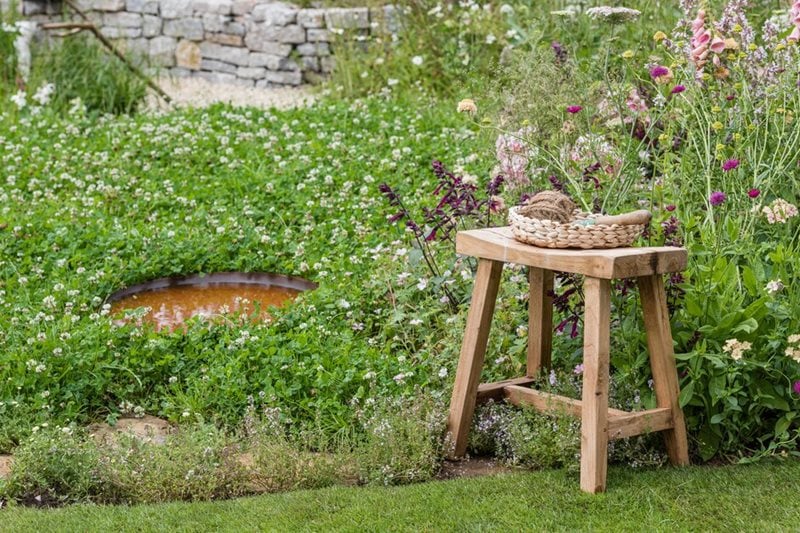 Take a break from mowing your lawn (or a small area of it) to encourage the growth of nectar-rich plants, such as clover. These plants provide a vital food source for pollinators and can make a beautiful feature too.
Take a break from mowing your lawn (or a small area of it) to encourage the growth of nectar-rich plants, such as clover. These plants provide a vital food source for pollinators and can make a beautiful feature too.
Feeling adventurous? Add wildflower plug plants or lay an area of wildflower turf for a really wild look that'll attract a greater variety of pollinators.
Relax about weeding
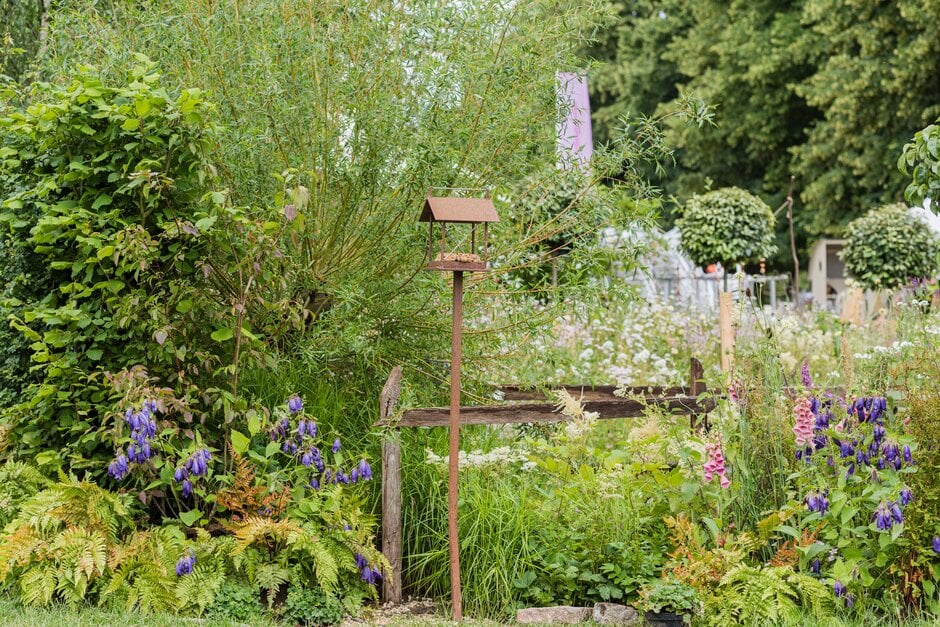 Take a more relaxed approach to weeding and let selected weeds grow among your planting. This is an easy way to increase the diversity of plants in your garden and introduce native plant species, supplying wildlife with extra nectar, pollen and seedheads, while giving your garden a relaxed and romantic feel.
Take a more relaxed approach to weeding and let selected weeds grow among your planting. This is an easy way to increase the diversity of plants in your garden and introduce native plant species, supplying wildlife with extra nectar, pollen and seedheads, while giving your garden a relaxed and romantic feel.
Give wildlife a home
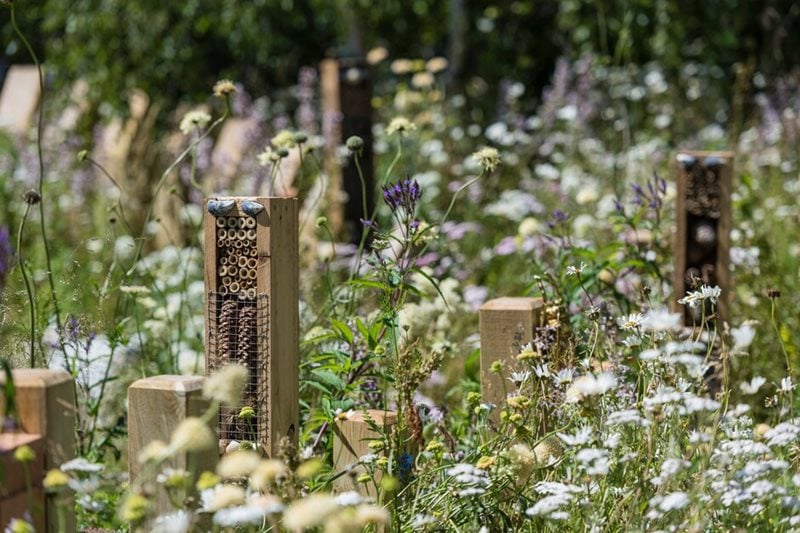 Bug hotels are a fantastic way to provide shelter for a whole range of insects, while piles of sticks also offer a simple home for small mammals. Arrange the pile as a sculptural focal point among your planting or as a decorative mulch around trees. Use material kept back from pruning your trees and shrubs, or take a family trip to forage for sticks.
Bug hotels are a fantastic way to provide shelter for a whole range of insects, while piles of sticks also offer a simple home for small mammals. Arrange the pile as a sculptural focal point among your planting or as a decorative mulch around trees. Use material kept back from pruning your trees and shrubs, or take a family trip to forage for sticks.
Feed the birds
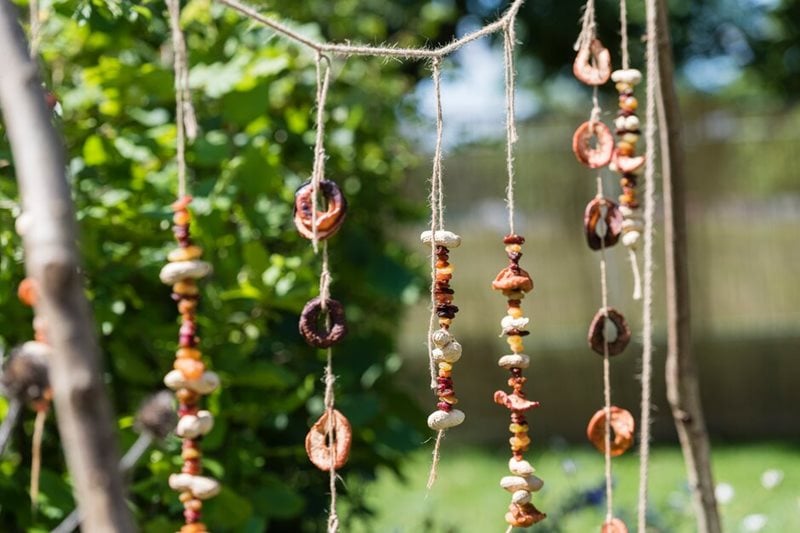
Enhance your garden’s appeal with a well-stocked bird table or feeder. The wider the range of foods on offer – such as the dried fruit and nuts in the picture – the wider the range of feathered friends that will come calling. This addition can add a stylish feature to your garden space, as well as support our native bird populations. Remember that birds are natural predators of insect pests as well.
Connect with your neighbours
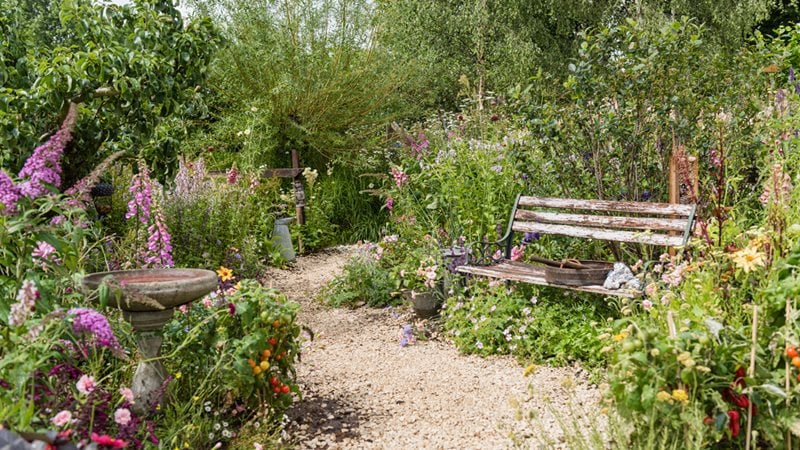 Start a conversation with your neighbours about what you could do together to support our wildlife. Open up your garden boundaries to create corridors for wildlife and share the responsibility of providing food, shelter and habitats to help preserve our endangered species. When considering garden boundaries, remember that hedges are much more wildlife friendly than fences, especially the type with rigid gravel boards that prevent creatures moving from one garden to another.
Start a conversation with your neighbours about what you could do together to support our wildlife. Open up your garden boundaries to create corridors for wildlife and share the responsibility of providing food, shelter and habitats to help preserve our endangered species. When considering garden boundaries, remember that hedges are much more wildlife friendly than fences, especially the type with rigid gravel boards that prevent creatures moving from one garden to another.
Read more about the BBC Springwatch Garden

